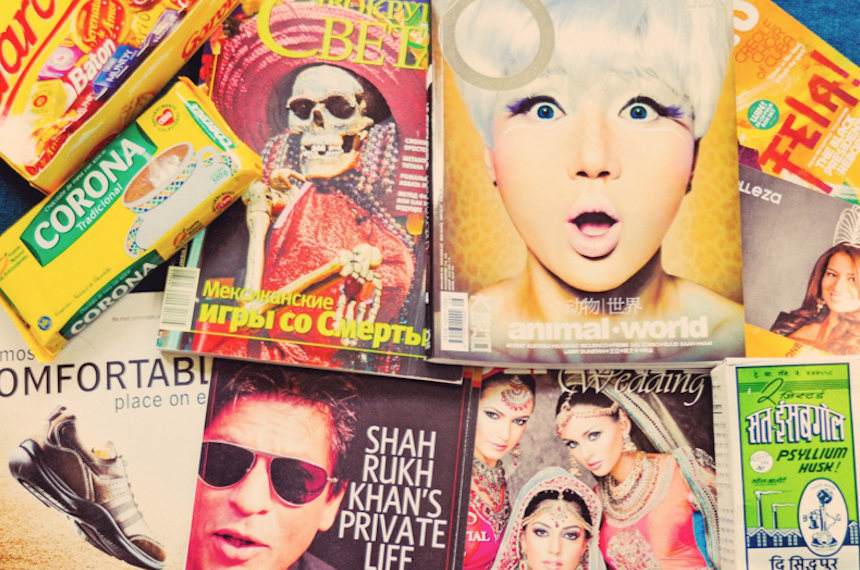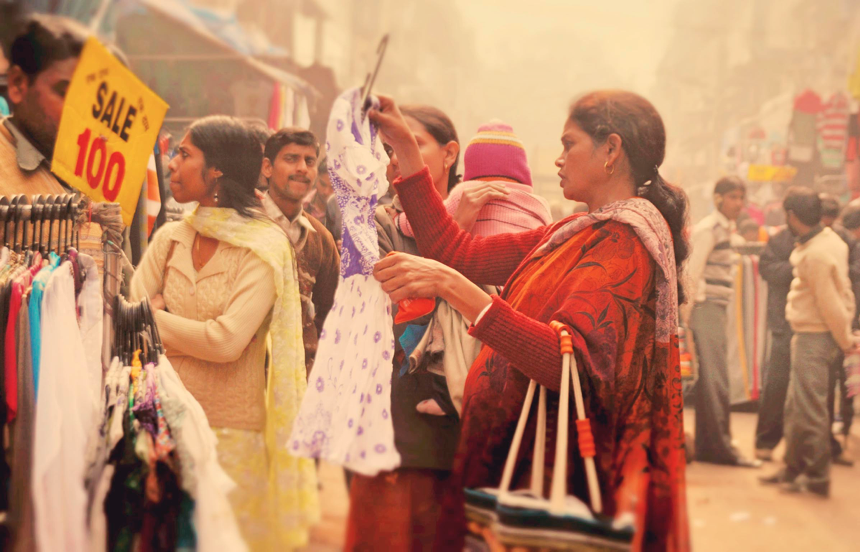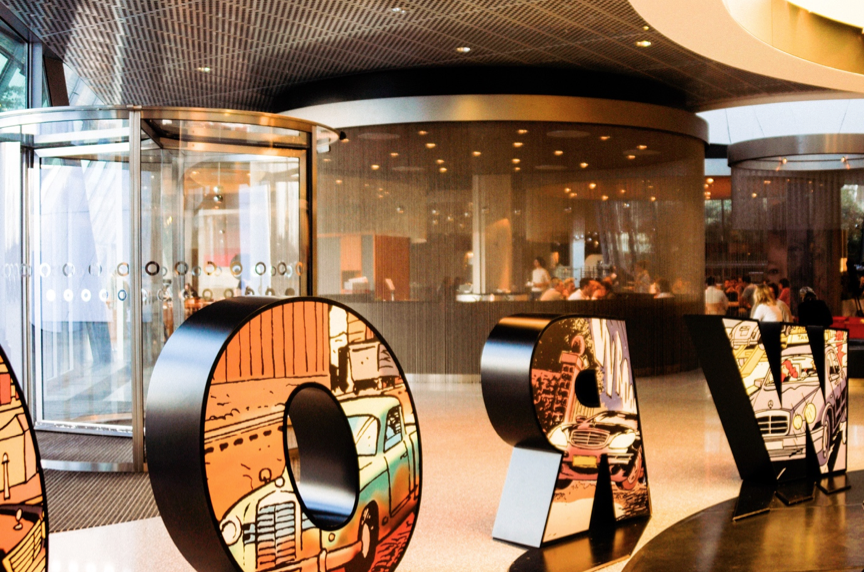I am an anthropologist and a semiotician. “A semio-what?” I have a set of answers to that question, ranging from ‘I explore meanings in culture’ to ‘I discover the subconscious cultural patterns we all use to find meaning around us, to understand how something makes sense to someone’. Sometimes the conversation turns to the lovely weather we’re having. But most people are interested and want to know more, because semiotics is one of the most powerful research methodologies to engage with strategic thinking and innovation.
Why is semiotics, once an esoteric methodology, becoming an essential approach to innovation challenges? The insights that semiotics delivers spark radical thinking, push boundaries and provide shifting perspectives. The method is known for embracing strategic dilemmas by making sense of complex cultural data and delivering practical insights around cultural transformations. Semiotics fosters innovation by getting involved in the detection of emergent changes in culture. It provides frameworks that help to structure scenarios that open up possibilities to think and to be unique.
Semiotics & Ethnography: A Powerful Combination
As ethnographers we get immersed in multiple worlds, focusing on people, their private spaces, routines, objects, what makes them different or draws them together. But the semiotic universe explores a place that is not limited to this immediate context—the signs that inhabit our surroundings and practices, cues that help people to make sense of their own realities. The semiotic connection with the images people see on daily basis is powerful, and semiotic analysis finds patterns that connect images with the emotional and sociocultural beliefs of daily life.
I use ethno-semiotics to explore the distinctive negotiations of signs in specific cultures, opening up opportunities to connect with various audiences and create new perceptual realities. I see it as a way of engaging businesses with the world of signification, to help them explore and validate the emotional, cultural and sensorial worlds of the populations we study. Ethno-semiotics allows me to place the individuals in the core of the story, explore their meaning-ecosystems and validate what resonates with them culturally.
Today images and cultural signs flourish and they embed a vitality which is fuelled by meaning. But semiotics does not produce simplistic formulae in which x image equals y meaning. Signification is contextual and dynamic, which is why ethnography and semiotics are so powerful in combination. We are constantly engaging with thousands of sensorial stimuli on daily basis, so ubiquitous that we hardly notice how these are influencing life at a deeper level. Signs are alive, they signify multiple worlds, multiple ideas and multiple ways of living making semiotics occupy a unique place in the complexities of innovation.
The field of Commercial Semiotics looks for signs that are particularly influential, signs that link with the daily realities of people. Semiotics on its own is useful to identify symbolic patterns of knowledge and engage with strategic thinking. But in combination with ethnography we can reveal further innovation opportunities and enhance customer experience. We can deepen our understanding of people’s needs and behaviours by engaging with cultural signs and emotions that are difficult for informants to express. Both methods working in conjunction can locate and validate expressed and unexpressed signs supporting the definition or re-definition of cultural systems.
Semiotics for Brand and Design Innovation
The diverse set of tools brought by semiotic thinking add a valuable viewpoint to future shaping of culture. Semiotics helps us explore unique ways of expressing and defining brand-product attributes and immerses us unknown cultures and their design dimensions, opening new directions to global and local brand programmes. Semiotics, and especially design semiotics, have become extremely useful for providing aesthetic-cultural direction, especially around clarification of culturally challenging design concepts, merging meanings, and emerging products and cultural phenomena.
Design Semiotics brings together the functional or aesthetic values of a product or a brand with cultural insights that help us understand the meaning-making processes of design experiences. It offers insights on how to create accurate and context relevant messages that strengthen brand and product equities. It also helps designers to understand their own meaning systems, allowing them to create robust design languages, communicate brand values effectively and linking with complex cultural universes of their audiences. Fine tuning production and consumption challenges, it helps companies to stay one step-ahead of their competitors by strategically placing distinct signification systems into future scenarios.
An understanding of the diverse semiotic dimensions also guides brands to design and shape user experiences. A semiotic approach is constantly contributing to the development of interfaces that are not only focused in the user or the service, but take into account the different contexts and complex eco-systems in which audiences interact. The work of semioticians within UX teams is important in the formation of new meanings about the future of user interfaces and distinct modes of viewing.
Semiofest: Semiotics and Innovation Culture
A venue to learn more about how semiotics has been applied in commercial projects is Semiofest—a forum for anyone interested in understanding how culture, meaning and communication work. Each year a diverse range of practitioners from qualitative research to brand planning and design to academia share cutting-edge techniques in critical communications problem solving.
This year, the programme has been designed to address directly innovation cultures, showcase semiotics applied examples and generate discussions on semiotics in the context of innovation. Practical case studies will be presented by expert applied semioticians from all over the world to showcase the relevance of semiotic insight for brand, product and design innovation. Topics will include everything from using ethnography and semiotics to design bank experiences, to redesigning a wheelchair, sonic branding, the creation of the Asian Infrastructure Bank iconography and the rebranding of the Mexican subway. We will discuss the capacity of semiotics to innovate and change, to embrace emergent cultural trends in branding and communications, and to catalyze creativity and innovation. If you cannot make Semiofest this year, you can follow the event on Twitter #semiofest or join Semiofest 2016 on Facebook.
 As founder of Visual Signo (UK) and co-founder of Semiofest, Lucia Laurent-Neva is responsible for demonstrating the increasing relevance of semiotics, cultural insights and design thinking to global brand strategy. She started Visual Signo driven by the belief that design thinking, semiotics, and anthropology provide perfect tools to help brands and organisations with their strategic and innovation challenges. Lucia is academically trained in Design, Semiotics and Anthropology.
As founder of Visual Signo (UK) and co-founder of Semiofest, Lucia Laurent-Neva is responsible for demonstrating the increasing relevance of semiotics, cultural insights and design thinking to global brand strategy. She started Visual Signo driven by the belief that design thinking, semiotics, and anthropology provide perfect tools to help brands and organisations with their strategic and innovation challenges. Lucia is academically trained in Design, Semiotics and Anthropology.
Learn Semiotics at EPIC2016!
Semiotics: A User’s Guide to Seeing Differently
Tutorial Instructors: Cato Hunt & Al Deakin, SpaceDoctors
Semiotics, the study of signs and cultural meaning, has been gaining ground in the world of commercial research. Semiotics has also been successfully melded together with ethnographic and other cultural approaches. This tutorial will equip participants with the tools, techniques and hands-on experience needed to begin their own semiotic research endeavors. Beginning with a grounding in semiotic theory, we will focus on building practical skills through ‘live decoding’ of a cultural theme. We will also share new thinking on sensory semiotics, which explores the role of the senses in communicating and constructing meaning through experience. By the end of the session participants will:
- Understand the background and basic principles of commercial semiotics
- Be able to work with some core models and methodologies and understand how and when they are useful
- Have co-produced a cultural residual-dominant-emergent model
- Have participated in a holistic sensory brand decode
- Leave with provocations for how semiotics can interface with human insight and ethnography




0 Comments